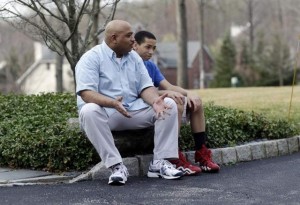Too many eyes on African-American youth?
Last month Trayvon Martin, a seventeen year old African American high school student, was shot and killed in a middle-class Florida neighborhood by a self-appointed watch captain, Andrew Zimmerman, who claims that he shot the boy in self-defense.
The case has earned national attention from the media, celebrities, and most importantly parents of young African-American males. Unfortunately, Trayvon Martin has become the poster child for African-American males that are automatically assumed to be criminals. According to an article in the Washington Post, Parents now are establishing rules for their children, teaching them that they may be scrutinized in public based on the color of their skin. Even though people may misjudge them, parents encourage them to be on their best behavior in public and avoid situations that yield even the most remote possibility of incriminating themselves. Children can do this by choosing the clothes they wear more wisely, taking precautionary measures not to resemble gang members. Andrew Zimmerman profiled Trayvon as “up to no good” because of the black hoodie he had pulled over his head in order to shield himself from the rain. Zimmerman discovered that the young black male was not carrying an alcoholic beverage or a weapon, but rather a can of iced tea and a pack of skittles. Trips to the local grocery store may not even be safe for young African-American males anymore.
In the Article Hemmed In and Shut Out the author explains that children who visit grocery stores avoid domestic turmoil and gang violence in the area they live in. They presumably frequent stores with little money to buy inexpensive items like candy, drinks, and snacks for themselves if they are not running errands for their parents. When African American youth visit stores in wealthier neighborhoods they can protect themselves from dehumanization by dressing up to appear respectable and nonthreatening to others. For example, areas that are at an economic disadvantage experience a “social and political culture [where] black has come to be equated with poor”(339). Wherever young African-Americans go, it seems people keep a careful watch. In the case of Trayvon Martin, too close of a watch. It is unfair to think African-Americans are instinctively considered guilty until proven innocent when killers like Andrew Zimmerman are considered the opposite. It is crucial for parents to advise their children on how to present themselves in public and react to awkward situations.

